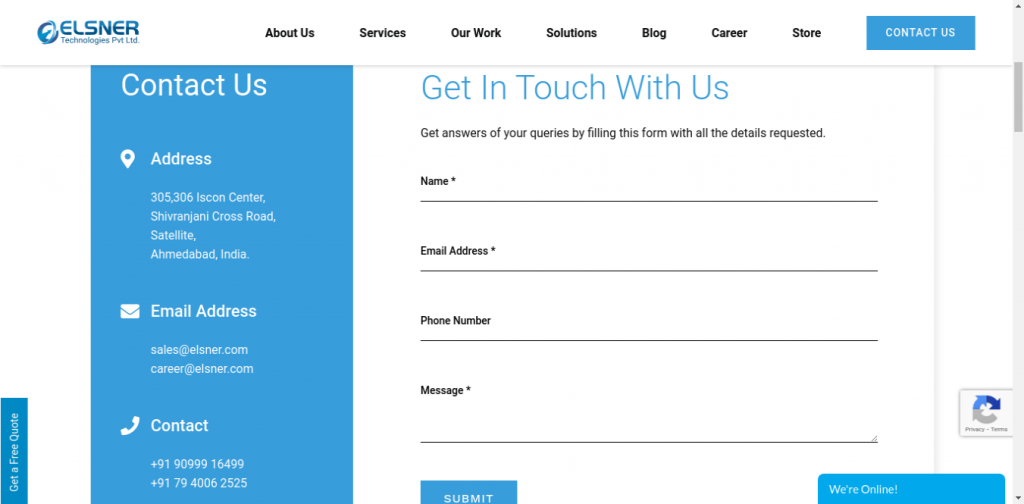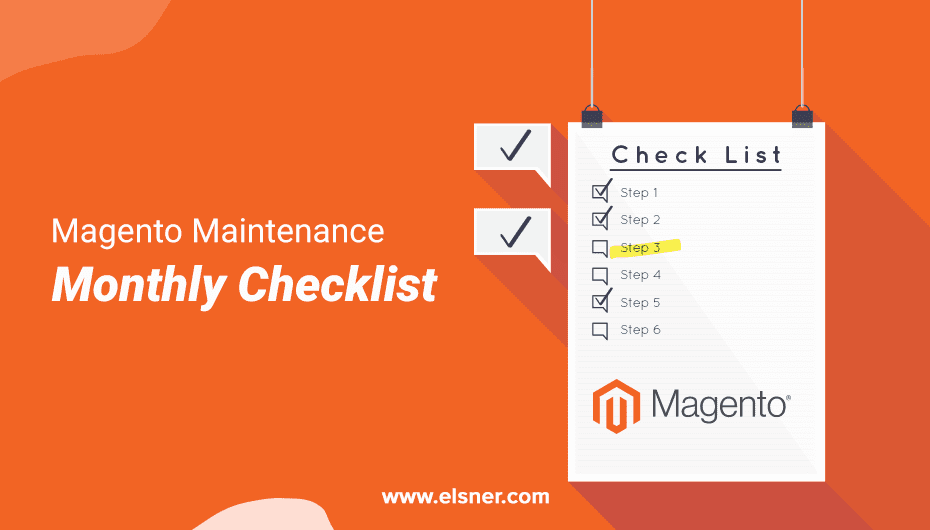Table of Contents
- Steps to Follow for Magento Maintenance Mode:
- 1. Start by Analyzing the Website’s Performance
- 2. Test the Website Speed
- 3. Perform Security Measures
- 4. Check for any Broken Links
- 5. Test Website Forms
- 6. Check the Order Processes
- 7. Backup the Store Data
- 8. Update your Website Content Regularly
- What more can you do during the Magento Maintenance Mode?
- Checklist for Daily Maintenance
- Checklist for Weekly Maintenance
- Checklist for Monthly Maintenance
- Checklist for Yearly Maintenance
We understand it is important to build a website but it is very essential to maintain the website to gain customers. Magento development is the first step to enter the digital world and it needs great efforts to stand strong in the developing market. Magento has already supported many e-commerce businesses and provides regular updates to these platforms for boosting performance and conversion rates.
Steps to Follow for Magento Maintenance Mode:
1. Start by Analyzing the Website’s Performance
Performance analysis of the website aims in looking at the potential issues that are on the website or may occur in the future. There are many tools available in the market like Google Analytics that can help in monitoring key features like bounce rates, traffic, orders, and more. Users might exit the website which will increase the bounce rates due to page loading speed, form submissions, content, and spam traffic. Analyze the website and look for such weaknesses in the website that can affect your business.
2. Test the Website Speed
Magento Development Company will understand the importance of loading speed on the website. This enables them to access view pages, navigation, and store views. Slow-loading web pages can increase your chances of cart abandonment which affects your digital visibility. Running a speed test is an important element of the monthly maintenance checklist which will help in Magento optimization and take necessary steps.
3. Perform Security Measures
This is the key factor of e-commerce platforms as users will be sharing their sensitive information with you. Providing a secure platform can gain users’ trust and convert them into potential customers efficiently. Search engines also prioritize the websites that are safe for the visitors and keep them on higher ranks in the SERPs (Search Engine Result Pages). Any gaps in the security cause issues for business, so you need to consider the data privacy laws declared for the e-commerce platforms.
4. Check for any Broken Links
This can happen during Magento 2 Migration
where users reach a dead end on your Magento store. This will give a bad user experience and lead to abandoning the website without taking your services. You can use tools like Google and Bing webmaster can ease the detection of such broken links which can be fixed easily. In the Magento maintenance mode fix such pages and provide a smooth user experience to your visitors.
5. Test Website Forms
Check the forms that are part of your marketing and selling process in the e-commerce sector. This helps in maintaining the Magento store information that it collects from the users like Email address, contact details, and personal details.  A minor mistake in this step can cause the loss of conversion rates and affect rankings in the search engines.
A minor mistake in this step can cause the loss of conversion rates and affect rankings in the search engines.
6. Check the Order Processes
It is essential to test the entire process of orders on regular basis to make sure the UX is working fine. Assess the features add-to-cart, payment, product navigation, and checkout. If you have provided a seamless experience during the order process then it will make users return to the website for more orders.
7. Backup the Store Data
This is vital to ensure that even if any issues happen on the website you have the backup of your store. An updated backup of data can rescue you from any online threats that crash your Magento store. You can take help from an experienced Magento Development Company to check that you have backed up the right content and will work in case of an unexpected incident.
8. Update your Website Content Regularly
Update the content on the website regularly so that your visitors get fresh content on the Magento store. During the Magento Development make sure you give a makeover to the e-commerce store once in a while to give a better user experience and make the UI more interactive. Add new content that has followed all the digital marketing guidelines and gain more organic traffic effortlessly.
What more can you do during the Magento Maintenance Mode?
Checklist for Daily Maintenance
- Check Inbox for inquiries and messages from your customers
- Perform visual inspection
- Look for recent updates in the e-commerce market
- Track orders and shipments
Checklist for Weekly Maintenance
- Backup the data
- Update new features if introduced in the market
- Keep the content updated
- Check for errors and fix them as quickly as possible
- Track the availability and out of stock products
- Advertise your business using different platforms
Checklist for Monthly Maintenance
- Track the store security
- Analyze the page load speed
- Build reports to track your Magento store performance
- Test the contact forms
- Plan on discounts and promotions
- Contact with the customers who have abandoned your store
- Refresh your services and products
Checklist for Yearly Maintenance
- Keep track of your accounts
- Remove unnecessary extensions and data that isn’t required
- Perform Magento 2 Migration to upgrade the e-commerce store
- Review your strategies in the market
- Make future plan for your store in
- Know more about your competitors
Summary:
Magento Development is a challenging task that is more than just building an e-commerce store. It is important to perform the right Magento Maintenance steps to run successfully in the digital world. So, get the right resources and experienced Magento Development Company as they can maintain your e-commerce store seamlessly.

Digital Transformation begins here!
Let us write your business’s growth story by offering innovative, scalable and result-driven IT solutions. Do you have an idea that has the potential to bring a change in the world? Don’t hesitate. Share with our experts and we will help you to achieve it.




